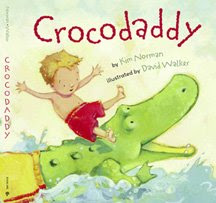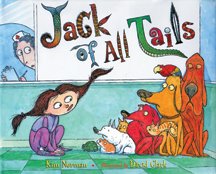
Today, I'm excited to host
Kerry Madden, author of
Gentle's Holler and the recently released,
Louisiana's Song, second in her Smoky Mountain Trilogy. As a writer who often battles insecurities (and my
Evil Inner Editor) when writing longer works, I'm especially awed by a writer who can produce a trilogy! So I'm going to selfishly ask her questions that might help me as I struggle to tame my "EIE."
First, Kerry, the age-old question for novelists: (Nope, not "where do you get your ideas?") Rather: Outline...? or just feeli ng your way along uncharted paths?
ng your way along uncharted paths?I borrow from real life and then I just feel my way along "unchartered paths." With this Smoky Mountain trilogy, I began by imagining my husband's family, but the characters have changed and grown into their personalities and lives. My husband's family never grew up in a Smoky Mountain holler - there was no blind child, no daddy with a brain injury and auditory hallucinations recovering in the holler, no bookmobile, no Uncle Hazard dog. But the spark was imagining how my mother-in-law coped with having babies in the 1940s, 50s, 60s, and 70s...(she's the mother of 13) and how her children might have thought or acted growing up in that big family. I also grew up drawing pictures of huge families - they intrigued me from childhood.
What is your writing schedule? Set number of hours, pages, words?I write when the kids are in school and if I'm under tremendous deadline, I write into the night and weekends. I have taken a few times to go away to the mountains and write and I love this - no distractions from home, and my imagination just opens up with the freedom of not having to stop and make supper or drive. When I needed to make serious tracks on shaping the story, I would make myself write 2000 words a day - or a chapter a day - and I would make myself move forward - not go back and revise. That never lasted long - I would go back and shape and revise anyway. Other times, I would just make myself write two pages a day when the plot wasn't coming. I struggle with plot. I usually write a very dull, bland first draft, which is embarrassing, but it makes me go back in for the attack and I am ruthless at cutting and taking risks at that point - it just takes me a while to get there.
Do you spend time researching your topic (especially location) first? Or do you just start writing, planning to fill in details later?I start writing and fill in the details later. The best part (of writing this Smoky Mountain Trilogy) has been my research trips back to the Smokies. I never went back when I was writing GENTLE'S HOLLER - I just remembered and wrote - we were too broke for a research trip. Then Viking asked me to write two more books, and there was no way I could stay away then. I met a woman Ernestine Upchurch who drove me up to Waterrock Knob and showed me plants...I spent time with kids, listening to them in the writing workshops. I took my daughter there last summer and watched her play - catching lightning bugs, running from wasps, finding a spider and egg sac (horrifying!). A family of groundhogs lived under our cabin and now they're in JESSIE'S MOUNTAIN. So is that awful spider and egg sac...but I needed to look closely at the towns in the mountains and Maggie Valley, especially.
 I know with your 1960s setting, you've probably chosen a period close to your own childhood, (sorry I don't know your age and won't ask!!) But I've found myself, when trying to write about that period, that historical details are still fuzzy. Did you need to refresh your memory about the time period? If so, how did you do that?
I know with your 1960s setting, you've probably chosen a period close to your own childhood, (sorry I don't know your age and won't ask!!) But I've found myself, when trying to write about that period, that historical details are still fuzzy. Did you need to refresh your memory about the time period? If so, how did you do that?Well, I picked the 1960s because my sister-in-law was ten in 1962, and I wanted to capture that time. So I began doing research by looking at headlines. LOUISIANA'S SONG, set in 1963, is grounded in that turbulent year - the Alabama Girls in the church bombing, the first woman (a Russian) in space, Patsy Cline's death, JFK's death...I also went to the Nashville Public Library and did research in the archives of old Nashville Banner newspapers. I discovered that 1963 was one of the coldest winters on record - even the lake by the Parthenon froze, and the ducks were at a loss as to what to do - that went right into JESSIE'S MOUNTAIN, because Jitters is worried about the ducks. (JESSIE'S MOUNTAIN has a chunk of Nashville in it.) I would look up movies and songs of those years too. And GHOST TOWN IN THE SKY opened in 1961, and I interviewed my husband's aunt Iris, who worked in the blacksmith shop and told folks the chairlift was "lightning proof" to set their minds at ease in thunderstorms. She told me great stories...
Your writing has been called lyrical, your voice very strong. Is that a voice that comes naturally in your first draft, or something that evolves after many drafts? Speaking of which: how many drafts? Do you know?I am very good at voice - I can write lyrical forever, but I'm awful at plot, so there can pages and pages of beautiful description that lead to nothing. But I've accepted that I just write that way - and much of it gets cut - has to...because there's no forward momentum. Then I add plot...I'm sure chapter one of LOUISIANA'S SONG was revised at least 100 times and GENTLE'S HOLLER too...typically I probably write 30-50 drafts with all the tinkering and revisions. I revise as I go most of the time...
Thanks, Kerry. Heartiest congratulations on the trilogy! (What a coup!!)Oh, that reminds me. One more question, if I may: Did you sell it as a trilogy from the start? I'm wondering since we're so often told to just sell one book at a time; then to offer a sequel to your editor if the first does well. Since 1 and 2 came out almost simultaneously, obviously that didn't happen here, you clever girl!I sold GENTLE'S HOLLER first, and it came out in 2005 in hardcover, but the paperback just came out in April. So it's been two years between books. GENTLE'S HOLLER did well, and in the summer of 2005, Viking asked me to write two companion novels in Livy Two's Voice. I had been thinking of writing from every Weems' kid point of voice, but wise editors at Viking said "Livy Two is the voice of the family." And I'm so glad it worked out that way now. So one book sold, and then they asked for two more. I'm calling it the Maggie Valley or Smoky Mountain Trilogy for now, but I may write more stories of these mountain kids. I hope to after I finish the Harper Lee biography for kids. Thank you so much, Kim. It was lovely to talk to you!
You, too, Kerry!
Be sure to check out Kerry's other stops on her blog book tour this week:
Elizabeth DulembaDotti Enderle
Alan Gratz
Ruth McNally Barshaw
 This is me and my friend Rene tappin' our hearts out. Rene is tall, gorgeous one with the cheekbones to die for. I'm... the other one.
This is me and my friend Rene tappin' our hearts out. Rene is tall, gorgeous one with the cheekbones to die for. I'm... the other one.















